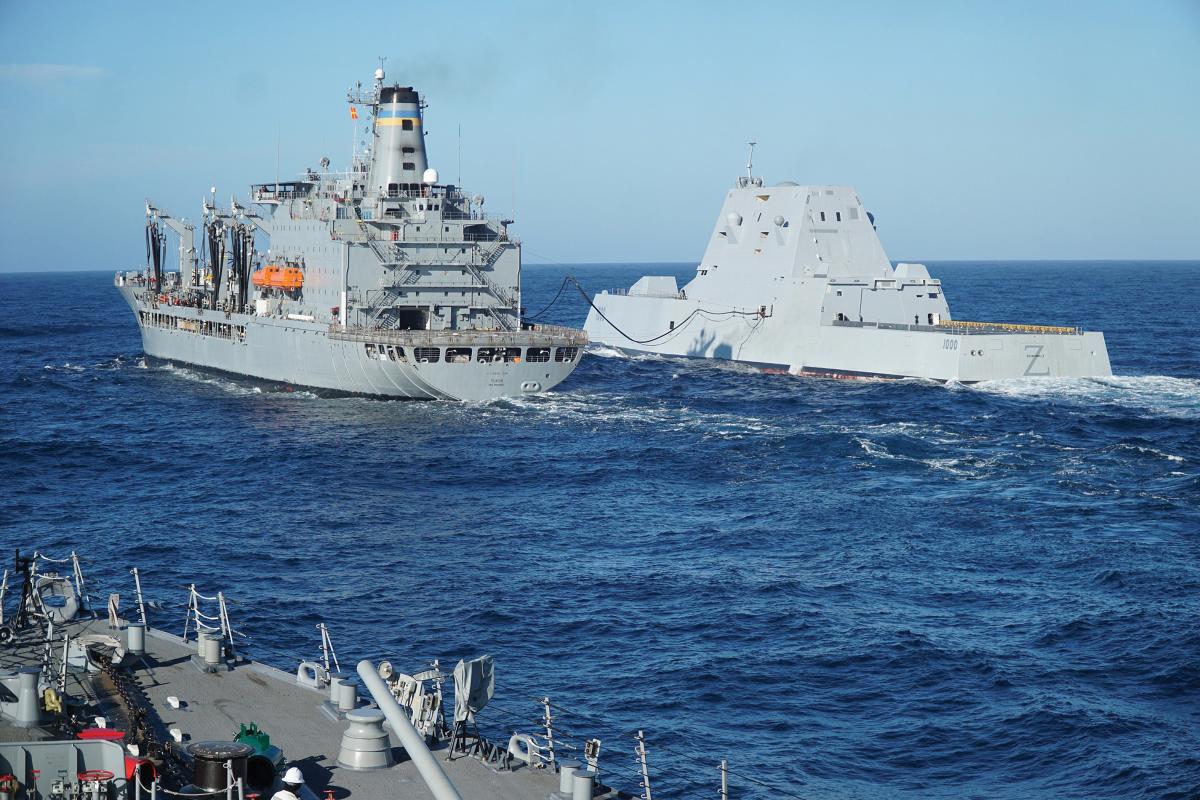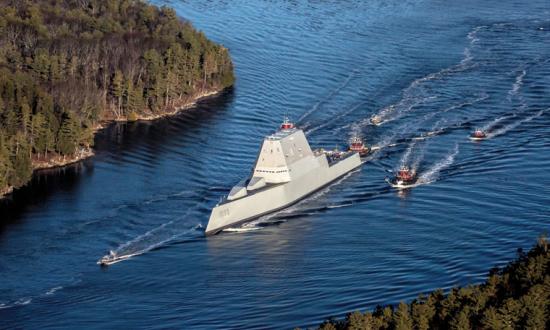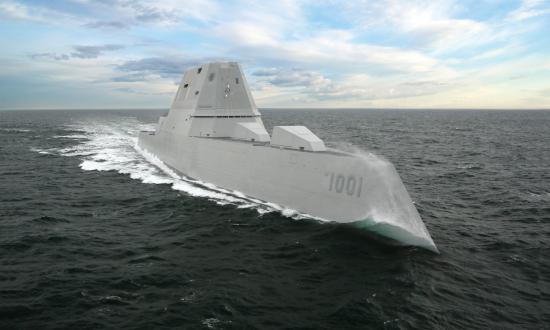Traditional readiness models of train, deploy, overhaul, repeat would be a catastrophic waste of the Zumwalt-class destroyers and crippling in the face of peer conflict. With a mere three ships in the class, only one Zumwalt likely would ever be available in a time of crisis.
There is a better option.
First, reclassify these ships as heavy cruisers. At 14,000 tons each, this is an accurate description. While it might hurt the pride of their crews not to be able to call themselves “tin-can sailors,” it is important to create the distinction that these vessels are not escorts. They have a separate mission. They should not be protecting other ships from attack; they should be attacking other ships.
Second, keep the Zumwalts together. Place all three in San Diego as a single squadron. Put them on the same pier. Upgrade and refit them together. Train them to work together. Train them to hunt together. Use them for every opposing force training exercise possible. Accumulate on these ships the corporate knowledge of where to be to cause problems, so these ships know where to find their quarry. Rotate in two to three littoral combat ships or frigates as force multipliers and escorts. For the next 30 years, when crisis strikes, send these ships—together.
Third, make them ship killers. This effort already is under way, but in the interest of creating the proper ethos and driving home mission focus, this mission must be paramount in their description. Remind and train their crews that their job is to kill ships. Each of these vessels has 80 vertical launch system cells; if half of those cells contain antiship missiles, then these three ships become an existential threat to any navy on the planet.
Fourth, fix the guns. Either come up with some affordable ammunition or replace the mounts with something the Navy can afford to use. The Zumwalts have great low-observability features and two gun mounts. Getting those mounts operating means an enemy combatant would face the very real possibility of receiving a high rate of fire from multiple directions and undetected threats. Assuming a 10-round-per-minute firing rate and 50 percent accuracy, such combined firepower would put 30 rounds of ammunition into an enemy vessel in the first minute. Speed of kill matters; the more quickly an enemy combatant is destroyed, the less information that combatant will relay about the nature of the attack. The less enemy fleet commanders know about why they are losing ships, the less those enemy fleet commanders will be able to do about it.
Always keeping one Zumwalt deployed will provide little additional deterrent to U.S. adversaries and yield little impact in a sudden conflict. What one more destroyer brings to a carrier group pales next to what a surface action group built around three heavy cruisers would bring to a fight. The Navy must not dilute the capabilities these ships possess. By concentrating the class into a force in waiting, the Navy gains far more value from these few vessels.







